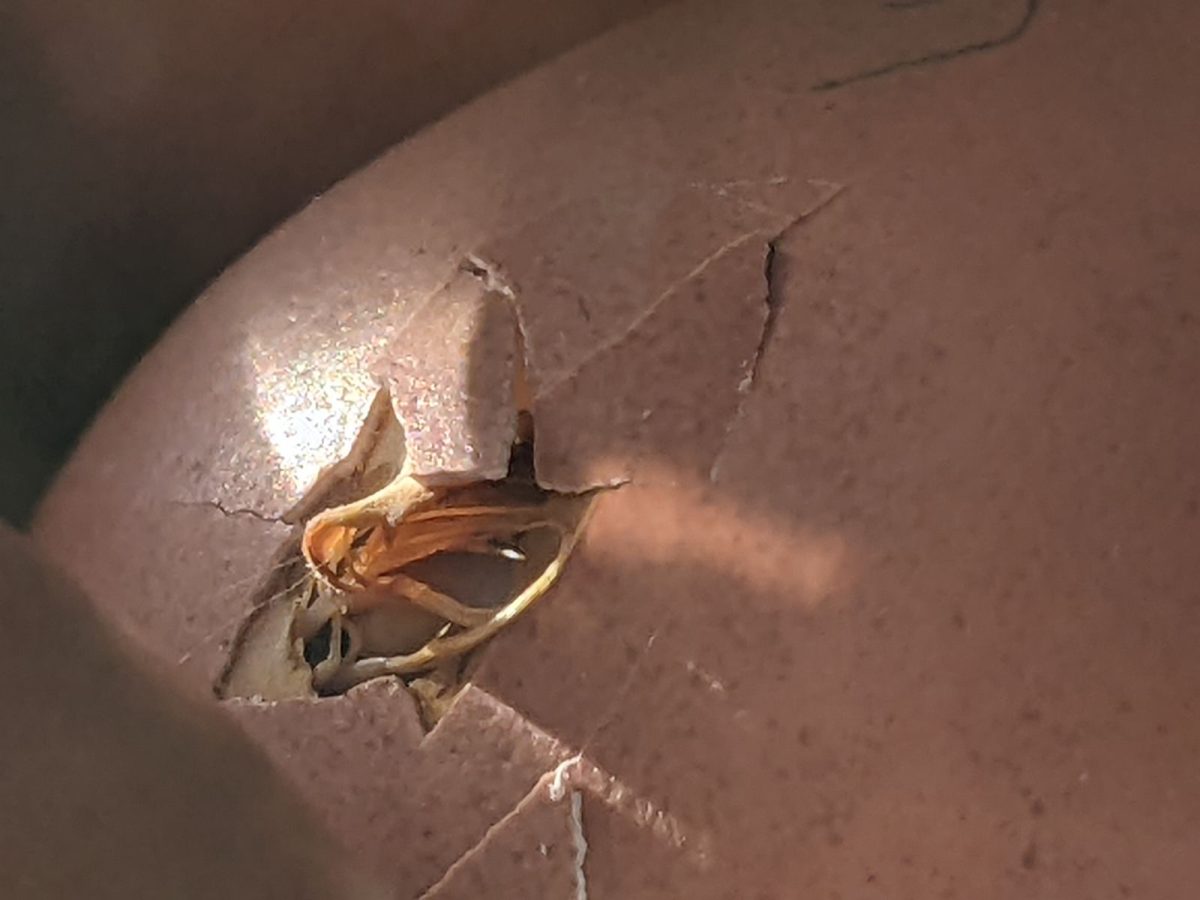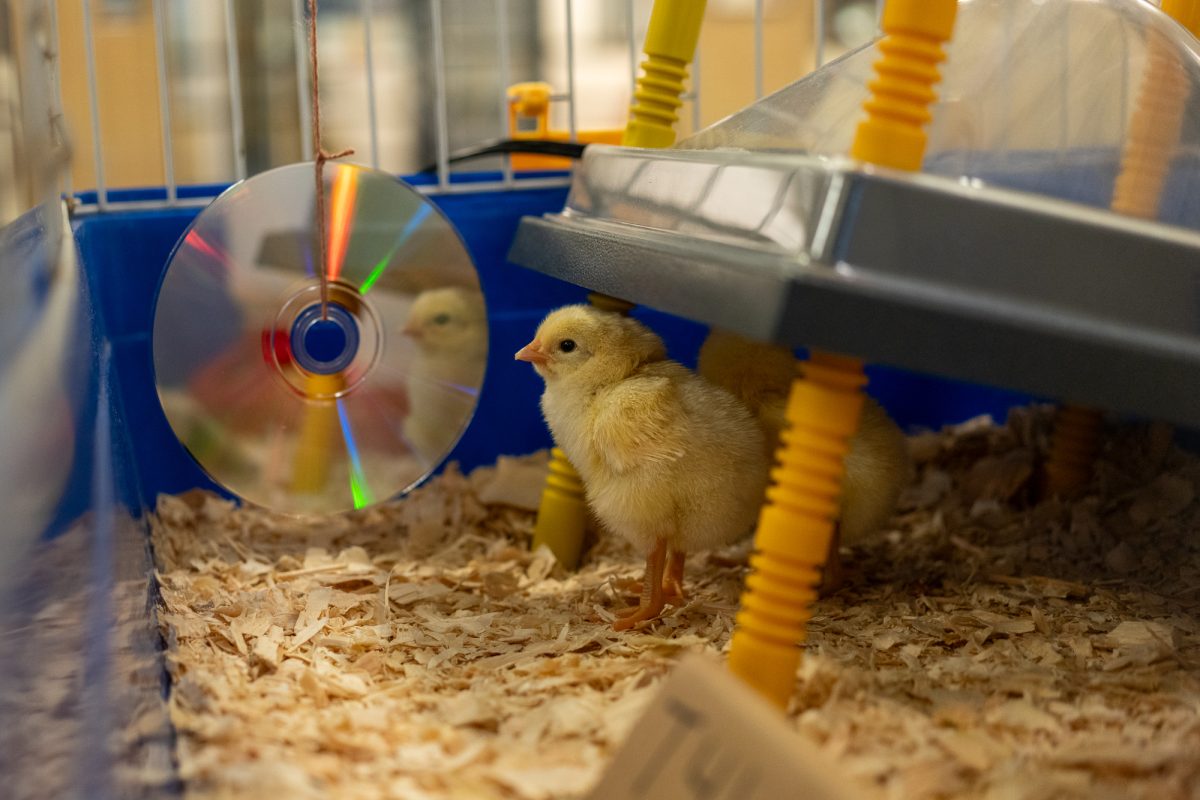The NASH cafeteria is home to many different sounds: the excited call of hungry students, the scraping of plastic utensils on styrofoam trays, and the echo of locker doors slamming nearby. But recently a new sound has filled the air: the chirping of baby chickens.
Next to the cafeteria’s left entrance, a cart of odd supplies sits tucked away near the art gallery. Here lie two baby chickens, just a few days old. Curious, but fearful, they spend most of their day huddled under an incubator gathering warmth. As adorable as they are, most NASH students don’t seem to know why the chicks currently reside in the cafeteria. The answer is a collaboration of efforts from multiple teachers in different departments to create a cross curricular education experience.

The project was started and spearheaded by Family and Consumer Science Department Chair Elizabeth Gallagher.
“I learned about the company Rent the Chicken/Hatch the Chick at the PAFCS Conference in April of 2023,” Gallagher said. “They were one of our presenters on sustainability. I thought it was so neat, and I signed up to rent two chickens over the summer and met with Dr. Dirda about the possibility of bringing the Hatch the Chick program to NASH.”
This novel idea made itsdebut at the Senior High School this year, but it has held prevalence at the elementary schools for quite some time.
Another major contributor to the Hatch the Chick program is Science Department Chair Chris Omasits.

“Through many of our higher level classes in both the family & consumer science and science departments, NASH students are able to discuss the details of development of the chicks and be a part of the process throughout the 21 days,” Omasits said. “We have had the chance to go much more in depth and teach them even more about a project that they might remember doing in elementary school.”
Both Gallagher and Omasits appreciate that the project has served as educational for the students as well as entertaining for the staff and faculty to watch.
“It has been great to see students, faculty and staff engaged in the project, from candling the eggs, to watching a hatch, or holding and observing a baby chick,” Gallagher said.
As for the project’s future, its success this year indicates continuation. But Gallagher is interested in even more varied educational opportunities regarding the Hatch a Chick program.
“Hatching birds has been a component of many educational programs to teach about the life cycle,” she explained. “Classrooms have hatched not only chickens but also ducks and quail. Eventually I would love to hatch quails, too.”
For now, the chicks will continue to grow into full-fledged chickens right before the student body’s eyes. The birds may mainly serve as an educational venture, but their entertaining behavior and adorable appeal have clearly captured the hearts of NASH students.
“When the eggs started to crack and hatch, it was amazing to watch the chikens come out,” junior Ekua Kwakwa said. “I think we should get more chickens in the future.”



